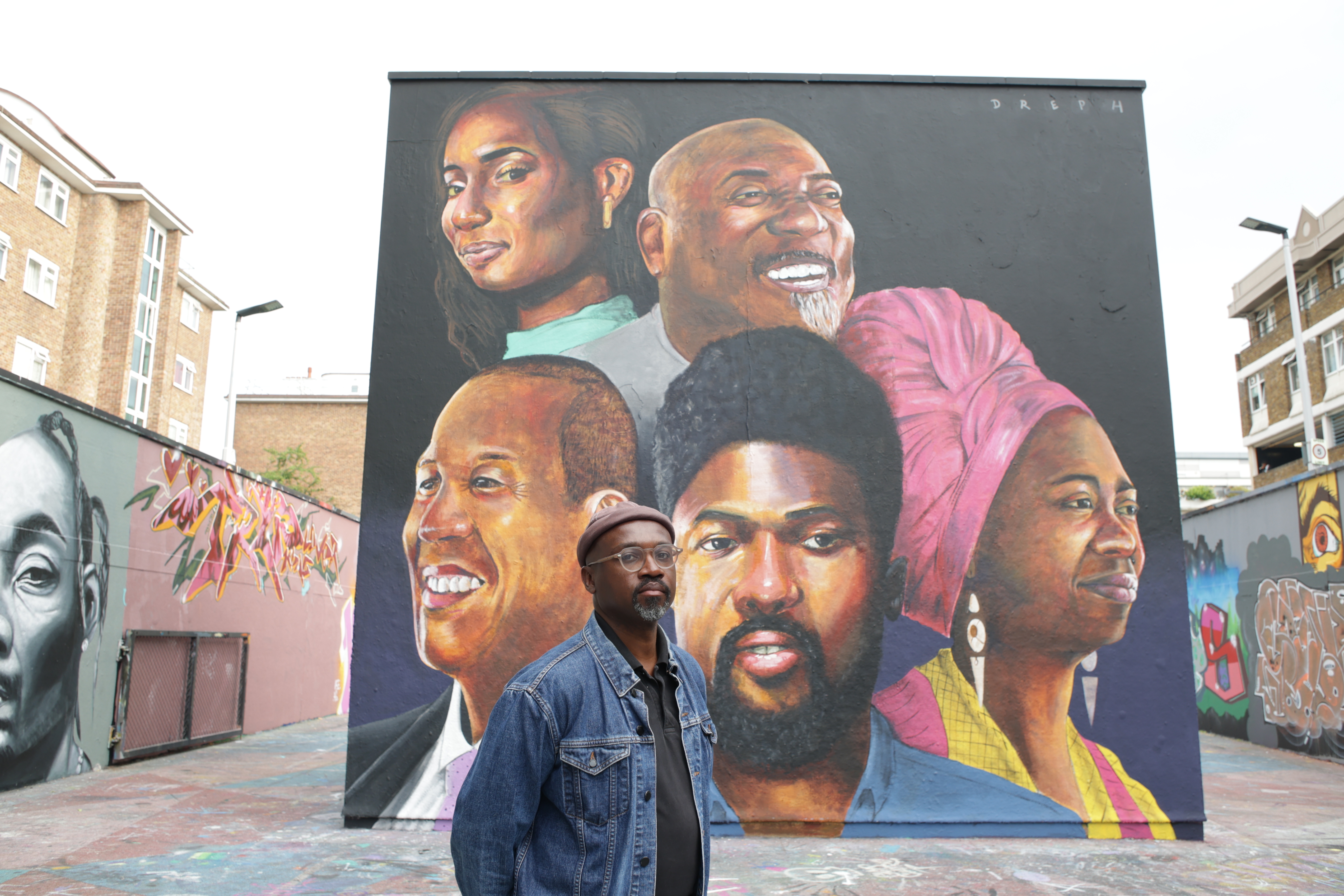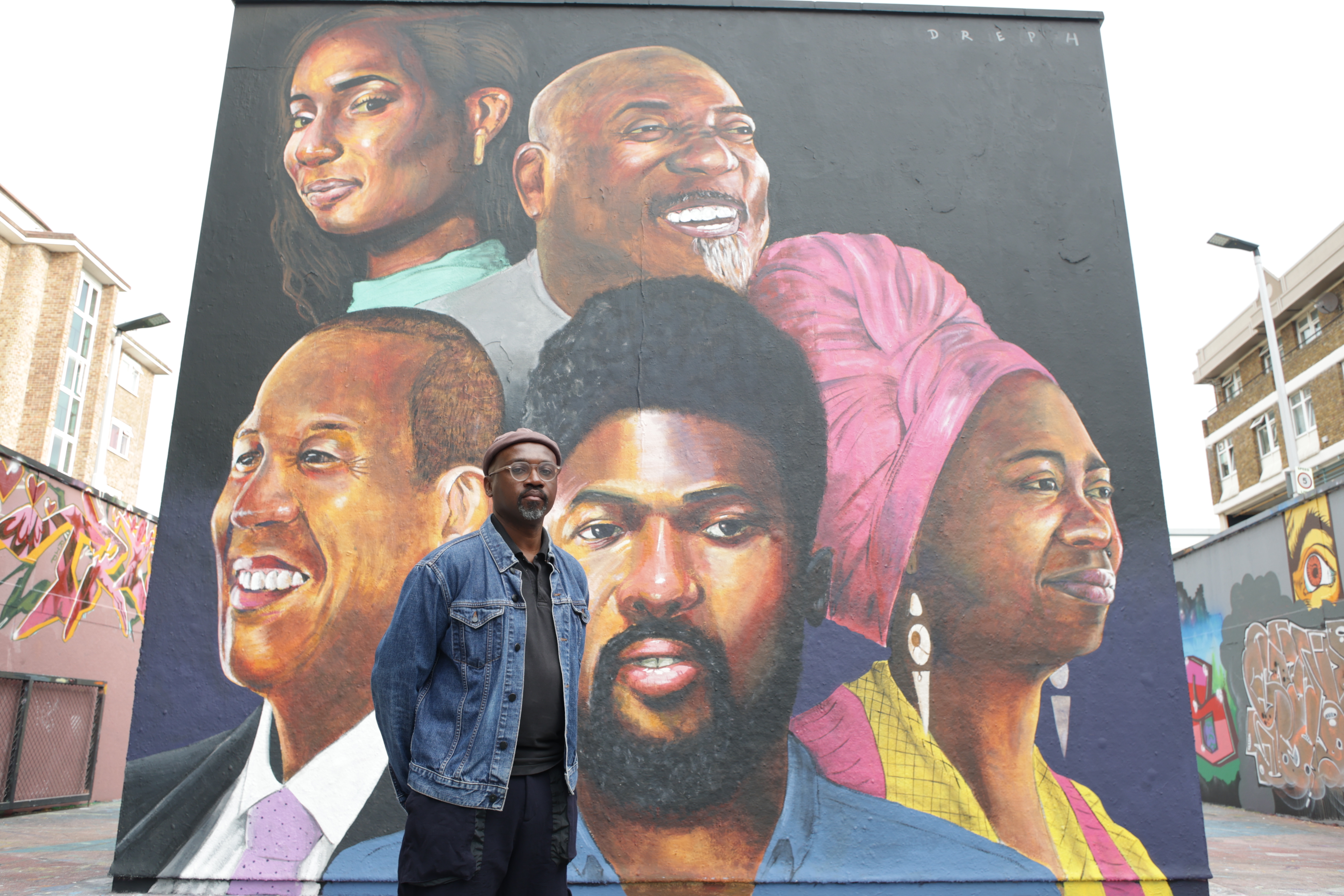A black British artist hopes his mural honouring black blood donors can encourage more “generous souls” to donate blood to “save lives” as the NHS highlights the need for “more people of black heritage to come forward”.
Neequaye Dreph, 49, from London, has unveiled a mural honouring members of the black community in England who donate blood to help those living with sickle cell disease, to mark the start of National Blood Week.
The mural, which is displayed in the Stockwell Hall of Fame in London, forms part of NHS Blood and Transplant’s Giving Type campaign which aims to change the misconceptions around sickle cell by encouraging more people of African and Caribbean heritage to donate blood.
Dreph’s colourful artwork shows five portraits of black donors, wearing bright clothes, drawn against a black backdrop.
The painting highlights five “incredible” people who regularly donate blood to help patients with sickle cell and the street artist hopes his artwork will highlight the “very real and important issue” of sickle cell.
Dreph, who has been painting for 30 years, said: “Everyone in the black community knows someone with sickle cell.
“It’s a very real and important issue that touches so many lives right here at home in the UK.
“I am grateful and humbled to have met these five incredible human beings who regularly give their blood to help patients with sickle cell, and I hope that this art will inspire more generous souls to come forward and save lives.”
Those with sickle cell disease produce unusually shaped red blood cells that can cause issues as they do not live as long as healthy blood cells and can block blood vessels.
Sickle cell is among the fastest growing blood disorders in the UK, and disproportionately affects people of African and Caribbean heritage, according to NHS Blood and Transplant (NHSBT).
It reports that more than half of blood donors of black heritage have the blood type needed to help sickle cell patients compared with 3% of the general population.
NHSBT says that giving blood can save up to three lives with each donation and it is calling for more donors to help those with sickle cell disease.

Neequaye Dreph, who spent seven days painting the piece, said: “Over the last few months I’ve been working closely with one of my aunties, who has sickle cell.
“So, the thing about being close to someone who has sickle cell is when they have their debilitating pain you feel very helpless and you want to do something.
“You might not be able to do something with that particular person, but the idea of being able to give blood, and that blood can then help someone with their transfusion, or potentially save the life of at least three adults, it’s an amazing thing, it’s an amazing act of generosity.”
Torkwase Holmes, 60, from Filton, Bristol, one of the five people depicted in the mural, said it was “amazing” to be featured.
“Amazing, proud, that I could be showcased like this, but it’s because of the work that I do,” she told the PA news agency.
“People know how important it is to give blood, especially for our community.”

Ms Holmes has been giving blood regularly since 2001, but due to a recent operation, she can no longer donate which she said was “devastating”.
“I just gave blood anyway to help people, and once you give blood you are literally saving three people’s lives,” she said.
“I’ve had an operation which has prevented me now from giving blood, which was devastating to me, really devastating to find out that I couldn’t give blood anymore, so December was my last donation I gave.
“I actually cried when I knew I couldn’t give blood anymore because that’s how important it is to me. But I want to keep pushing it to our community how important it is for us to give blood.
“It’s so sad that so many people turn away from giving blood, and what we need to do is educate them, change the mindset of those out there.”
Naim Akhtar, consultant haematologist and lead in donor medicine for NHS Blood and Transplant, said: “Many sickle cell patients need regular blood transfusions to prevent life-threatening complications, but currently we are only able to provide ethnically matched blood for around half of the hospital requests – leaving other sickle cell patients at risk of developing serious reactions to non-ethnically matched blood.
“While we are delighted to celebrate members of the black community who regularly step forward to give lifesaving blood, demand is increasing rapidly and we urgently need more people of black heritage to come forward.”
The mural will be on display to the public throughout National Blood Week which runs from June 12 until June 18.
You may also like: Ofcom to gauge public opinion on politicians presenting TV and radio programmes

